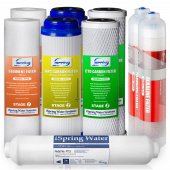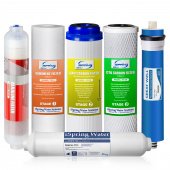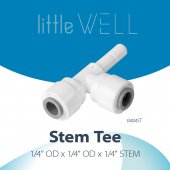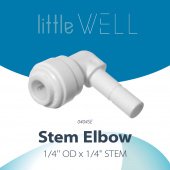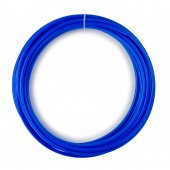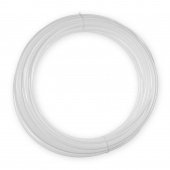Where do I get replacement filters and which ones do you need to change and when?For this Alkaline Reverse Osmosis Water Filtration System RCC7AK, it is recommended to replace: Why do Reverse Osmosis water systems waste water?To start with, let's make it clear: ALL Reverse Osmosis units produce wastewater. With the modern technique, the waster water ratio can be reduced but not eliminated. Here is how the RO system works. The RO water system will split the water stream into two flows; one is purified water, and another is wastewater. There is a flow restrictor on the wastewater line, which will slow down the water flow. Hence, it will create enough water pressure to force the H2O to pass through the semipermeable membrane to remove dissolved solids. Is there a difference between this iSpring brand and other brands? Why is the price gap so dramatic?Since 2005, iSpring has brought an average Reverse Osmosis filter price down from the $700 range. We bypass middlemen, sell directly online, cut advertising and live up with customer reviews by continuous improvements. We are doing what we want to do: make clean water available and affordable to more people. We believe in long-term value. I followed the instructions and my water is coming out cloudy. What can I do to correct this?The water is cloudy for the first gallon. Please follow the instructions to flush the Reverse Osmosis water filtration system until the water turns clear. If you followed the manual and it's still cloudy, please do not hesitate to contact us at (678) 261-7611 M-F 9-5 EST. Do the filers of RO filter retain / put back fluoride in the water after filtration?This Reverse Osmosis filtration system will remove fluoride and does not put it back into the filtered water. How does the alkaline filter work? It says it \"gives back\" minerals such as calcium, but my water has no calcium to begin (already softened).The Reverse Osmosis drinking water filter system removes over 1,000 contaminants from the water, including some healthy minerals. Then the final stage, Alkaline Filter, contains calcite (calcium carbonate), mineral stones, and Corosex (magnesium oxide), which will add calcium and magnesium to the water (30-60 mg/l is added). What should I do with the under sink reverse osmosis system when going out of town?When you leave for an extended period, you will want to shut off the water supply to the RO water purifier and empty the tank. To do this, close the knob on the feed water adapter, and open the faucet until it stops running. This will signify that the tank is empty. If you are gone for more than a week, you will also want to remove the RO membrane and store it in a damp Ziploc bag in the refrigerator. What if there is zero output water from the RO faucet1) The water supply is closed. Open the water supply to the domestic RO filter system so the valve aligns with the red tubing. When installing this Reverse Osmosis water purifier, should the water source come through the Reverse Osmosis machine or directly from the raw water source?When installing a Reverse Osmosis water filter under sink where the water source is very hard, it is always recommended to install this unit after the water softener to prolong the membrane's life. So the best thing to do before installation is to get your water tested. You can read how to test your water here. If you do not have a water softener, you can simply install the RO machine directly to your raw water source. Although it may reduce the life of the membrane, it will still work. Can I install a water filtration system myself?Yes, a little basic plumbing knowledge is needed. The Reverse Osmosis drinking water system is designed for do-it-yourself installation. All necessary parts for installation are included, backed by clear, well-organized written instructions, instructional videos, and access to iSpring unparalleled technical support. What is the micron rating or smallest particles it removes? I'm concerned about microplastics that can be 1.0 micron.The membrane of this RO filtration system is 0.0001 micron, small enough to filter out most microplastics, but the system is not designed to disinfect your water or treat it for microorganisms. If your water contains microplastics or other microorganisms, we recommend treating this issue directly at the source instead before using any water filters. Or you can choose using RCC7AK-UV instead, which includes the Ultraviolet Filter that can treat unreliable water sources like lakes and streams. Why do I need to use a pressure tank?The expansion tank provides water pressure to your faucet. Traditional under sink RO water filtration systems usually need a tank to store pressurized water to meet the immediate water needs when you turn on the faucet. Secondly, the storage tank will also help with the system's operation. The RO tank will keep the pressure for the reverse osmosis system and automatically turn on / off the system by monitoring the waterline pressure. Why every fitting leak after installation?You have to push the tubing with a fair amount of force to get it to sit all the way. Usually, you have to insert the tubing about 1/2" into the push-in fitting. Secure it with the clip. If the leaking issue is still unfixed, please do not hesitate to contact us at (678) 261-7611 M-F 9-5 EST. Can this filter be installed on my refrigerator without the faucet?Yes, absolutely. The Reverse Osmosis water purification system can be used without the faucet. Where is this system made?The RO filtration machines without a pump are made in Taiwan, machines with pump are made in China. How much water can this system produce per day?This under sink RO system can filter up to 75 gallons per day. The storage tank can hold 3.2 gallons. If you use more than 3.2 gallons at one time, the water flow will be slowed down, but it can still come out. How many times does this under sink system need to be flushed before it's ready to drink from?3 times. The first flush is after installing the first 3 stages (the Active Carbon needs to be flushed first to avoid large particles going to the RO membrane) until the water is clean. The 2nd flush is after the RO membrane installation, which will get rid of the protector in the membrane and others for at least 15 mins apart from the tank. The 3rd flush is after the tank has been filled up completely. It will take 1.5 to 2.5 hours, depending on your water condition. After the tank is full, open the faucet and drain the tank completely. Is it BPA-free?Yes! All our products are BPA-free. Please don't hesitate to let us know if you have additional questions. Stay safe! Should I turn this Reverse Osmosis system for the kitchen sink off at night?No, this under sink Reverse Osmosis filter will shut off automatically once the storage tank is full. Does it remove PCBs?Yes, the reverse osmosis membrane removes 97% of PCBs. Can this residential RO water system be hooked up to an existing faucet rather than the one that comes with it?We strongly suggest using the included RO faucet but if your existing faucet can accommodate a 1/4" quick connect (push-in) fittings, this is possible. Please note that the flow may not be as strong if your existing faucet has a wide spout. How long is the faucet line?You will receive a 5 feet tubing for installing the faucet. Can this RO filtration be used for instant both hot and cold water?As long as the water for the instant heater is filtered before it gets heated, it won't be a problem. What we want to avoid is putting the hot water directly into the RO membrane. Can this RO water machine reduce mercury?For mercury specifically this RO system water purifier has a rejection rate of 96-98%. How do I make my reverse osmosis water alkaline?The reverse osmosis filtration system removes over 1,000 contaminants from the water, which includes some healthy minerals. You can purchase iSpring RCC7AK to make your RO water alkaline. The final stage of RCC7AK, Alkaline Filter, contains calcite (calcium carbonate), mineral balls and Corosex (magnesium oxide), which will add calcium and magnesium to the water (30-60 mg/l is added). Is the reverse osmosis water filter system NSF Certified?The innovative RO system under sink RCC7AK is certified to NSF/ANSI 58 for TDS reduction (58 for reverse osmosis). |
iSpring RCC7AK 6-Stage Reverse Osmosis System w/ Alkaline Filter, 75 GPD, NSF Certified
About this item
- Certified to NSF/ANSI 58, 6-Stage Alkaline Remineralization Layered Filtration - Exclusively designed to restore the natural alkalinity and mineral balance of water; this reliable and ultra-safe Reverse Osmosis (RO) water filtration system converts your water into clean, pure and healthy drinking water by removing up to 99% of over 1,000 harmful contaminants like PFAS, chlorine, fluoride, lead (removes up to 98%), arsenic, asbestos, calcium, sodium and more.
- GREAT-TASTING MINERAL WATER - A standard 5 stage RO system produces slightly acidic water with a pH of 7. 0 or below because the RO membrane removes not only harmful pollutants but also a few helpful minerals. The iSpring RCC7AK Reverse Osmosis water filter includes an additional 6th stage - an Alkaline Remineralization filter which restores healthy minerals and produces a balanced alkalinity, which gives your water a more natural taste than regular 5 stage RO water filter.
- LOW MAINTENANCE - Transparent 1st stage housing for easy visual inspection. Three extra long life pre-filters to remove large contaminants and protect RO membrane. Ultra fine (RO) filter to remove contaminants down to 0. 0001 microns; fine GAC filter to provide final polishing to the purified water and (AK) filter to finally restore just the right proportion of healthy minerals and a natural alkaline balance. The end result is great-tasting bottled-water quality.
- EASY TO INSTALL & NO LEAKS - The water purifier is designed for do-it-yourself installation and all necessary parts for installation are included. Backed by clear installation manual, instructional videos, and access to life-time technical support. The entire alkaline water filter fits nicely under a kitchen sink. For leak-free installation, simply push tubing ½ inch deep into quick-fitting connectors and lock; no threading pipes needed.
- 100% SATISFIED CUSTOMERS - RCC7AK from America’s favorite brand of under sink water filter is the highly rated reverse osmosis systems. Comes with 1-year limited manufacturer warranty upon registration and lifetime personalized support from GA, USA, combined with premium quality components, this water filter is to deliver endless bottled quality drinking water right in your home for many years to come, eliminating plastic waste.
Frequently Bought Together

iSpring RCC7AK 6-Stage Reverse Osmosis System w/ Alkaline Filter, 75 GPD, NSF Certified
$229.99
- Availability: In Stock
- Model: RCC7AK
- Manufacturer: iSpring
Write Review
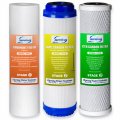 iSpring F3 10"x2.5" Standard Replacement Prefilter Cartridges for Reverse Osmosis and 3-Stage Water Filtration Systems, Pre-filter
iSpring F3 10"x2.5" Standard Replacement Prefilter Cartridges for Reverse Osmosis and 3-Stage Water Filtration Systems, Pre-filter $29.99
$29.99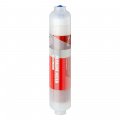 iSpring FA15 10-inch Inline 3-Layer Alkaline Replacement Water Filter Cartridge
iSpring FA15 10-inch Inline 3-Layer Alkaline Replacement Water Filter Cartridge $28.99
$28.99 iSpring ICEK Ultra Safe Fridge Water Line Connection and Ice Maker Installation Kit for Reverse Osmosis RO Systems & Water Filters, 1/4", Approximate 20 feet
iSpring ICEK Ultra Safe Fridge Water Line Connection and Ice Maker Installation Kit for Reverse Osmosis RO Systems & Water Filters, 1/4", Approximate 20 feet $21.99
$21.99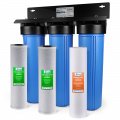 iSpring WGB32B 3-Stage Whole House Water Filtration System w/ 20-Inch Sediment and Carbon Block Filters
iSpring WGB32B 3-Stage Whole House Water Filtration System w/ 20-Inch Sediment and Carbon Block Filters $485.99
$485.99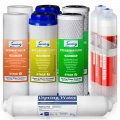 iSpring F9K 10"x2.5" Standard 6-Stage Alkaline Reverse Osmosis Water Filtration Systems 1-Year Filter Replacement Cartridges, 9-piece
iSpring F9K 10"x2.5" Standard 6-Stage Alkaline Reverse Osmosis Water Filtration Systems 1-Year Filter Replacement Cartridges, 9-piece $76.99
$76.99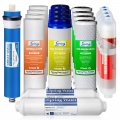 iSpring F19K75 2-Year Filter Replacement Supply Set For 6-Stage Reverse Osmosis Water Filtration Systems
iSpring F19K75 2-Year Filter Replacement Supply Set For 6-Stage Reverse Osmosis Water Filtration Systems $169.99
$169.99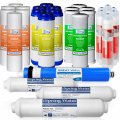 iSpring F28K75 3-Year Filter Replacement Supply Set For 6-Stage Reverse Osmosis Water Filtration Systems
iSpring F28K75 3-Year Filter Replacement Supply Set For 6-Stage Reverse Osmosis Water Filtration Systems $209.99
$209.99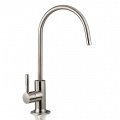 iSpring GA1-BN Heavy Duty Non-Air Gap Drinking Faucet for Water Filtration, Reverse Osmosis Systems-Brushed Nickel-Contemporary Style High-Spout
iSpring GA1-BN Heavy Duty Non-Air Gap Drinking Faucet for Water Filtration, Reverse Osmosis Systems-Brushed Nickel-Contemporary Style High-Spout $39.99
$39.99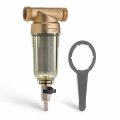 iSpring WSP Reusable Spin Down Sediment Water Filter Whole House Water Filtration System -1" MNPT + 3/4" FNPT, Brass
iSpring WSP Reusable Spin Down Sediment Water Filter Whole House Water Filtration System -1" MNPT + 3/4" FNPT, Brass $61.99
$61.99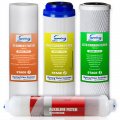 iSpring F4AK 10"x2.5" Standard Water Filter Packs Replacement Cartridges for 6 Stage Reverse Osmosis, 6-Month Supply, No RO membrane
iSpring F4AK 10"x2.5" Standard Water Filter Packs Replacement Cartridges for 6 Stage Reverse Osmosis, 6-Month Supply, No RO membrane $39.99
$39.99
- Start DownloadRCC Series Manual (NSF)




















 RCC7
RCC7 RCC7AK
RCC7AK RCC7P
RCC7P RCC7PAK
RCC7PAK F3
F3 F4
F4 F9K
F9K F19K75
F19K75 F28K75
F28K75 F5-75
F5-75
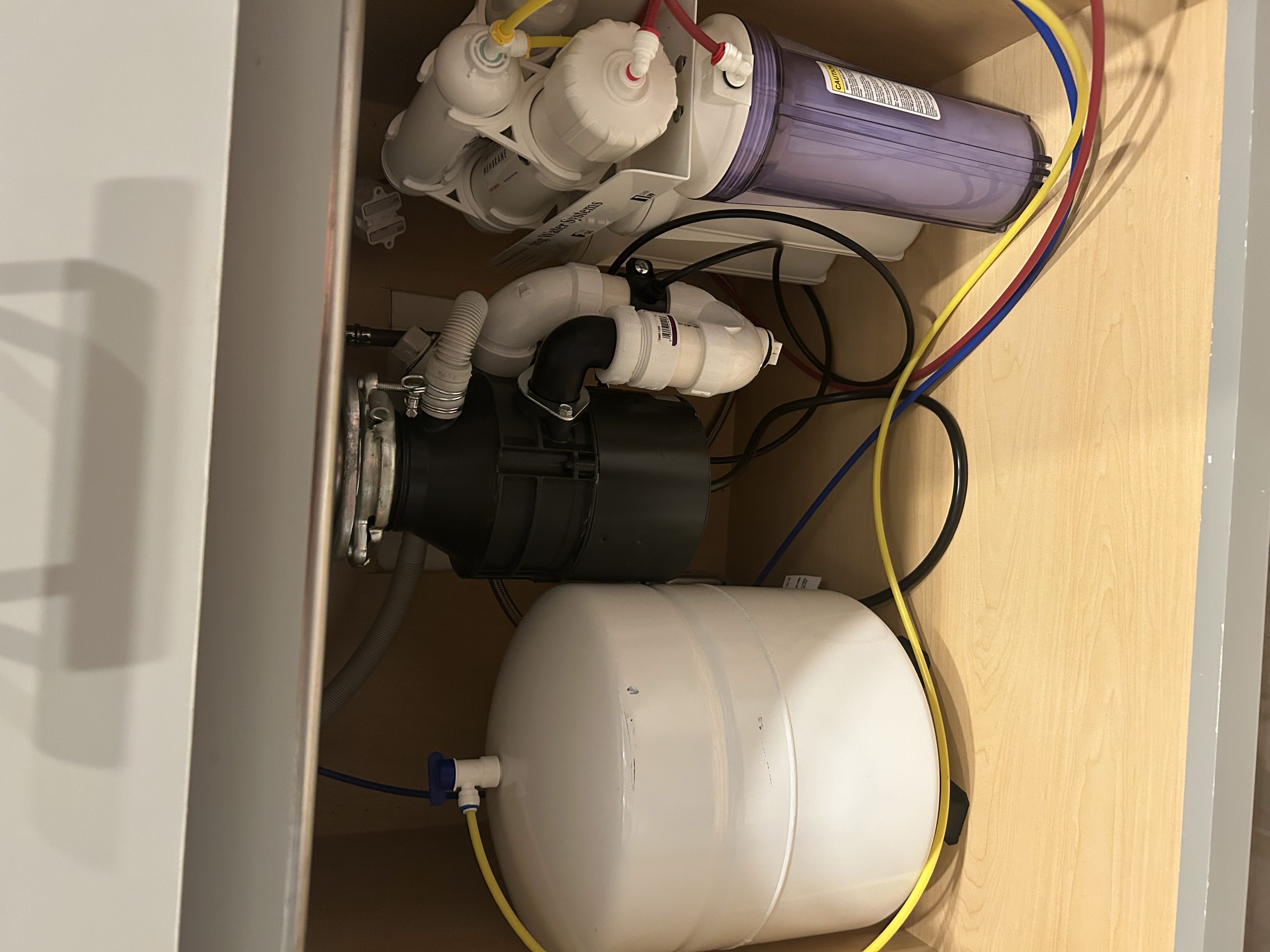
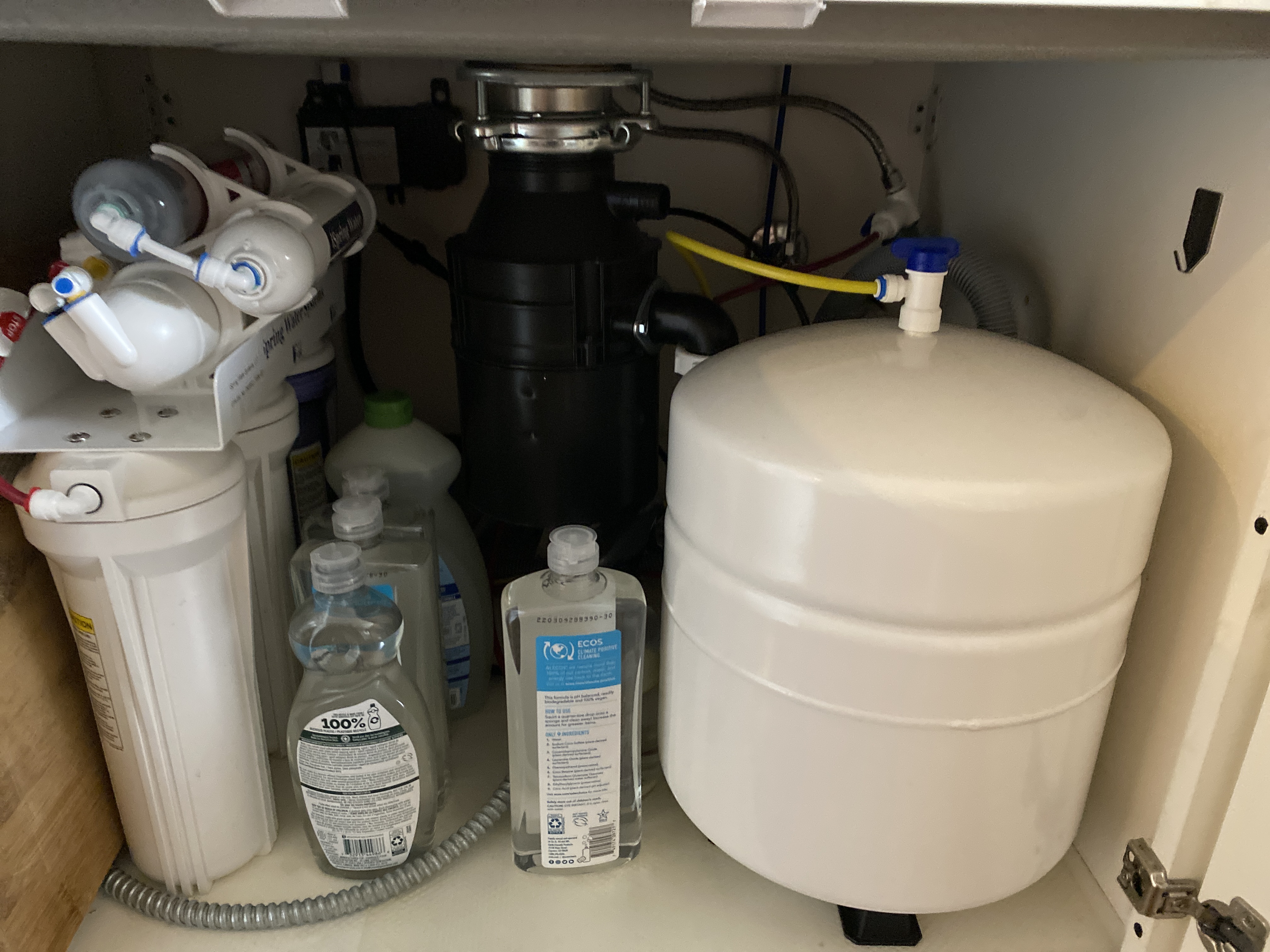
.jpg)










